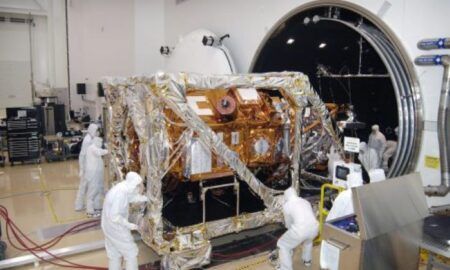Whenever the Global Hawk unmanned aerial vehicle (UAV) begins a mission, it has to travel through a certain area of the atmosphere that, under certain conditions, can create ice on the aircraft, adding weight and aerodynamic drag. A cloud deck from about 8,000ft to 22,000ft is the main concern for the UAV, according to project engineer Jonny Kim at Global Vigilance Combined Test Force (CTF).
According to Major Ryan Finlayson, test pilot with the Global Vigilance CTF, the ice only forms for about five minutes on the way up, and again on the way down through this cloud deck.
To ensure that these variables will not negatively impact the Global Hawk’s role, members of the Global Vigilance CTF are testing the aircraft in a unique way. Rather than wait for the right weather and the formation of the correct height cloud deck, technology was used to design and 3D-print nylon attachments to mimic the ice shape that would form on the aircraft during ascent and descent.
“We actually had the aircraft take off with the equivalent of light time icing on the wings and tail – something that no other aircraft would normally do,” said Lt. Col. Cory Naddy, director of the Global Vigilance CTF. “From the moment we lifted off, we were operating in an envelope that was unproven and many risk factors were at play.”
Before the aircraft was ever flown, the team modeled the shapes and performed wind-tunnel testing. Since the Global Hawk is an unmanned aircraft, the accuracy of flight tests was even more important. “We had to get it right the first time,” Finlayson said. “The [Global Hawk] pilot controls a lot, but not the flight controls.”
Once ground tests were completed, the CTF prepare the aircraft for actual flight testing. The aircraft was flown with different fuel loads, first with a medium load and then two more flights with heavy fuel loads.
“We started at lower altitudes and worked our way up,” said Major Finlayson.
The pilot said these tests may not lift any flight restrictions on the Global Hawk, but they do open the door. “We’ve shown that the aircraft is flyable if it picks up a bit of ice,” he said.
The simulated ice was made using a process called selective laser sintering (SLS). The process uses a bed of powder, and a laser solidifies the powder to create shapes. Sintering can be done with several materials, including glass, metal and nylon. The process allows for complex geometries without support structures and produces parts that are air- and water-tight, heat resistant, and strong.
May 20, 2016




